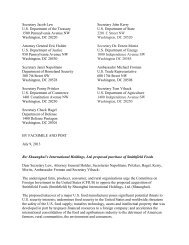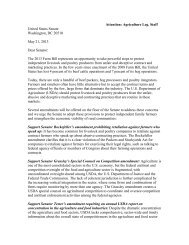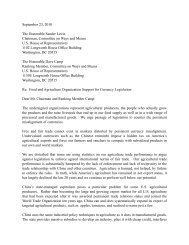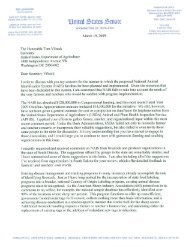The usual route of infection in pigs is through ingestion of <strong>FMD</strong>-virus contaminated products, direct contact with infected animals, or occupation of heavily contaminated environments. The incubation period in pigs will vary with the strain, dose, and route of infection. Serotype O, which is highly virulent in pigs, can produce clinical signs within 18 to 24 hours, while pigs with low-level exposures may take up to 11 days to develop clinical signs. Pigs that recover from <strong>FMD</strong> infection do not become carriers, as was thought with ruminants [51]. <strong>FMD</strong> virus localizes in various organs, tissues, body fluids, bone marrow, and lymph nodes [52]. Viral replication may reach peak levels as early as 2 to 3 days after exposure. Virus titers differ in different organs or tissues. Some tissues, such as the tongue epithelium, have particularly high titers. Recent data indicate that the most viral amplification occurs in the stratified, cornified squamous epithelia of the skin and mouth (including the tongue). Although some viral replication also occurs in the epithelia of the pharynx, the amount of virus produced there is apparently much less than the amount produced in the skin and mouth during the acute phase of the disease. By comparison, the amount of virus (if any) produced in other organs like salivary glands, kidneys, liver, and lymph nodes is negligible [53, 54]. Immunity to <strong>FMD</strong> is primarily mediated by circulating antibodies [55]. The host reaction, including antibody production, occurs from 3 to 4 days after exposure. In infected pigs, the virus is cleared within 3 to 4 weeks. In contrast, around 50 percent or more of cattle will develop a low-level persistent infection, localized to the pharynx [56-58]. According to Alexandersen (2002), a model for progression of infection starts with virus exposure, then accumulation of virus in the pharyngeal area, followed by the initial spread through regional lymph nodes, and then via the bloodstream to epithelial cells. Several cycles of viral amplification and spread follow[55]. Clinical signs in cattle during acute infection include fever, profuse salivation, and mucopurulent nasal discharge. The disease is characterized by development of vesicles on the tongue, hard palate, dental pad, lips, muzzle, gum, coronary band, and interdigital spaces. Vesicles may develop on the teats. Affected animals lose condition rapidly, and there is a dramatic loss of milk production [48]. The animal usually recovers by 14 days post infection provided no secondary infections occur [50]. The most consistent clinical signs in pigs are lesions around the coronary bands and lameness, but fever may be inconsistent. Pigs may develop vesicles on the tongue and snout, but these may be less conspicuous than lesions seen in ruminants. The severity of clinical disease depends on the age of the infected pig. Adult swine may recover or become chronically lame while younger pigs, especially those less than 8 weeks of age, may die from acute myocarditis without developing other clinical signs [48, 57]. Diagnosis of the disease relies heavily on recognizing clinical signs. In unvaccinated cattle and pigs, the clinical signs are obvious. However, in small ruminants the disease is often subclinical or is easily confused with other conditions. In addition, in endemic regions, clinical signs in partially immune cattle may be less obvious and could pass unnoticed [48, 57]. Virus isolation and serotype identification are necessary for confirmatory diagnosis. The clinical signs of <strong>FMD</strong> are similar to those seen in other vesicular diseases. Differential diagnosis of vesicular diseases includes vesicular stomatitis, mucosal disease of cattle, bluetongue, rinderpest, and <strong>FMD</strong>. Serological diagnostic tests include the complement-fixation test, virus neutralization test, and an enzyme-linked immunosorbent APHIS <strong>Evaluation</strong> of the Status of the <strong>Brazil</strong>ian State of Santa Catarina 72
assay test. Other diagnostic tests include one- or two-dimensional electrophoresis of the viral DNA, isoelectric focusing of the viral structural proteins, or nucleotide sequencing of the viral RNA[47]. <strong>FMD</strong> virus is a relatively resilient virus. It can survive up to 15 weeks in feed, 4 weeks on cattle hair, and up to 103 days in wastewater. The survival of the virus in animal tissues is closely associated with the acidity of that tissue. For example, in muscular tissues the acidity of rigor mortis, which occurs naturally, inactivates the virus. The production of lactic acid in these tissues during maturation is considered the primary factor for inactivation [43]. An acid environment where the pH is less than 6.0 will destroy the virus quickly [43, 59]. Several studies showed that in tissues where no acidification occurs (e.g., lymph nodes, bone marrow, fat, and blood), the virus may survive for extended times in cured, uncured, and frozen meat [43, 60, 61]. Heating at 50° C [43] and up to 155° F [59] will inactivate the virus. APHIS <strong>Evaluation</strong> of the Status of the <strong>Brazil</strong>ian State of Santa Catarina 73
- Page 1 and 2:
APHIS Evaluation of the Status of t
- Page 3 and 4:
LIST OF FIGURES Figure 1: Map of Br
- Page 5 and 6:
LIST OF ABBREVIATIONS ASF: APHIS: B
- Page 7 and 8:
USDA: VIAA: VS: United States Depar
- Page 9 and 10:
EXECUTIVE SUMMARY The U.S. Departme
- Page 11 and 12:
managers that will allow APHIS to d
- Page 13 and 14:
Legal authority for animal disease
- Page 15 and 16:
and implement animal health activit
- Page 17 and 18:
Table 2. Structure and human resour
- Page 19 and 20:
kept, with the documentation being
- Page 21 and 22: Figure 5: FMD status zones, Brazil,
- Page 23 and 24: FMD Brazil currently has several di
- Page 25 and 26: higher risk. In addition, the local
- Page 27 and 28: officials, the private sector’s p
- Page 29 and 30: Immediate assistance to States for
- Page 31 and 32: 7. Movement control, biosecurity, a
- Page 33 and 34: In 2005, Santa Catarina’s officia
- Page 35 and 36: products, such as offal for human c
- Page 37 and 38: Brazilian law prohibits all transpo
- Page 39 and 40: corridor inspection posts that were
- Page 41 and 42: Table 7. Livestock farms in Santa C
- Page 43 and 44: Figure 10: Bovine density and distr
- Page 45 and 46: The cooperative farm producers kept
- Page 47 and 48: Animal gathering points In Santa Ca
- Page 49 and 50: Three geographical sampling strata
- Page 51 and 52: follow on notification of vesicular
- Page 53 and 54: Table 10. Samples collected in 2000
- Page 55 and 56: 10. Diagnostic laboratory capacity
- Page 57 and 58: provide CSFV-FMDV diagnostics. Thes
- Page 59 and 60: holding and begin tracing animal mo
- Page 61 and 62: Likelihood of the introduction of n
- Page 63 and 64: Exposure Assessment An exposure ass
- Page 65 and 66: apparent [28]. Survival of both SVD
- Page 67 and 68: eradication strategies to control t
- Page 69 and 70: partners’ restrictions on animals
- Page 71: ANNEXES Annex 1. Hazard Identificat
- Page 75 and 76: Annex 3. Hazard Identification: Swi
- Page 77 and 78: Annex 5. Epidemiologic Characterist
- Page 79 and 80: REFERENCES 1. Office International
- Page 81 and 82: 43. Green, J.W. and Grannis, J.L. E
- Page 83 and 84: 2. Title 9, Code of Federal Regulat
- Page 85 and 86: 45. Kitching, R., et al. Developmen











